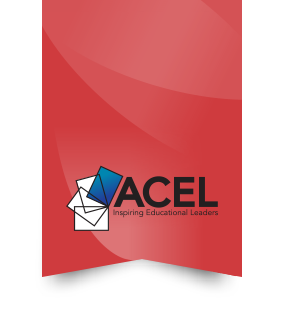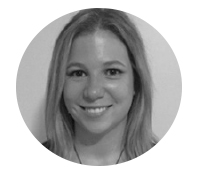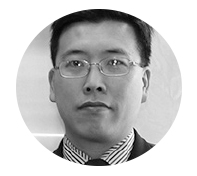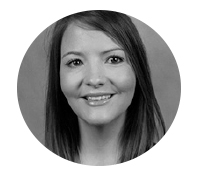
New Voice Scholars: Perspectives
Improving the Status and Recognition of Teachers
“The New Voice Scholarship is a fabulous opportunity for skilled and motivated educators to be recognised by their peers. ACEL is committed to giving-back to the profession, through the provision of world-class learning opportunities for up-and-coming leaders, and we are thrilled to welcome the 2016 Scholarship winners into the ACEL network. There is also opportunity to have their voices heard through ACEL Publications and at events. All winners of the New Voice Scholarships were invited to write for the special issues of Perspectives, where they consider the following topic, with no limitations or directions, If you were able to transform education (given a metaphorical magic wand), what would you do? These perspectives are, like our New Voice Scholars contexts, diverse and inspiring. I hope these articles challenge and inspire you to reflect further.”
Aasha Murthy, CEO ACEL
Alexander Mason
Academic Enrichment Teacher
Grace Lutheran College, Rothwell and Caboolture, QLD

In late 2012 while undertaking my final practicum, a spirited and enjoyably argumentative history student said they had heard that “those who can, do, and those who can’t, teach”. In the context in which it arose I did not consider the comment disrespectful or offensive. As a teacher in training, and a student of history and law, it presented itself to me as the perspective of a young mind testing the bounds of an emerging world view. My response that November morning reflected a view of education that has remained unchanged: that old refrain missed a fundamental point of education. To my thinking it has never been about ‘do’ or ‘can’t’. Instead, it has always been – and must be seen – that “those who can teach, should!” Practical consequences flowing from this view underpin my perspective on ‘transforming’ education in Australia.
The one thing I would do to ‘transform’ education in Australia is seek every opportunity to raise the profile of teaching as a profession in the public forum. That is, I should like to see a greater match between public rhetoric and the many private discussions I have had with parents and guardians of students, with colleagues, and with friends about teaching and the value of teachers. Education in Australia at both a policy and practical level is facing many challenges. Several newspaper column inches, not to mention journal space, blogs, and tweets, point those interested in Australia’s education future to a dissonance between much public rhetoric and the reality of informed classroom practice.
The education policy debate identifies myriad contemporary issues including teacher quality and retention, equitable funding, ‘21st century skills’, curriculum reform, and the nexus between ‘big data’ and increasingly competitive, globalised education. The factors behind these issues demand the attention of established and emerging educators, working in partnership to set out clearly communicated positions as well as to deliver well-articulated defences. It is critical that those professionals tasked in a serious way with addressing those factors, and their importance to Australia’s future, are widely affirmed.
So, how do we shift the public conversation to one in which the role of the teacher is valued? That is, one that implicitly and explicitly values the role of teacher as a field of endeavour requiring a particular skill set and nothing less than utter professionalism. I suggest it may be done in three ways:
- ‘Conversations’ within the classroom: To be clear, I am not referring to using power or influence to direct students to teaching and away from other paths in the name of professional self-interest. What I am talking about are the subtle and not so subtle signals sent by teachers about their craft. Teachers have chosen to be in the profession and so owe it to themselves and their colleagues to give every outward appearance they want to be there. What message does it send to a patient if a cardiologist’s heart no longer appears to be in it? How many children and parents or guardians have been wittingly or unwittingly turned away from considering how they might use their valuable skills to teach as a result of implied critiques, or ill-considered comments, made by those discharging their professional obligations?
- Conversations with the ‘influencers’: In a world that values occupations and professions for many reasons including some relating to a material return on one’s schooling investment; some to perceptions of status; others to the benefits of job security; and still others for the sorts of problems they solve in the world, I would encourage multiple channels of communication within and between the various influencers in our community about the explicit and implicit messaging surrounding teaching as a career. This requires conversations not readily dismissed or misconstrued as self-serving, but framed to acknowledge the benefits to current and future public interest resulting from elevating the public regard for teaching as a profession.
- Conversations between teachers and beyond: It was reassuring for me that at the recent ACEL Queensland Awards, and at the Australian College of Educators National Conference in 2015, so much discussion centred on how teachers see themselves as professionals. It appears – from my limited perspective – that we are on a cusp of ascendancy in professional identity. This is a good thing. But whether or not I am correct in this assessment, we should be careful to move beyond the way teachers see themselves as professionals, to how this and future generations see teachers regarding each other as professionals. We need the crowds to be cheering from the grandstand, not just be the athletes on the track patting each other on the back.
While this perspective suggests ways to shift public conversation towards one in which it is widely acknowledged that ‘those who can teach, should’, it is not the ultimate objective. In time, I should like to look back on a career in teaching to observe that, steadily and relentlessly, the public conversation has shifted still further. It would be a surpassing joy to witness the realisation of a greater goal: “those who can teach will want to!”
Perspectives
Deborah Netolicky
Leader of Coaching Cycles for Teacher and Leader Growth
Wesley College, Perth, WA

Changing the Structure of Schools
There is no singular silver bullet that will transform education.
Those of us who teach, lead, research, and write about education can,
however, work to positively influence it. At the risk of echoing the
Turnbull Coalition election slogan “Jobs and Growth”, there are two
broad arenas on which I believe we can focus in order to improve
education for young people in Australia, and for those charged with
serving them in our schools: the trust and growth of teachers.
While
current policies and metrics encourage teachers and schools to focus on
performing well in league tables or looking good in glossy brochures, I
argue here against artificial veneers of improvement, and performance
against questionable measures. Instead, I propose directing attention
towards trusting the capacities of teachers, and adequately resourcing
growth-focused opportunities for teachers.
Trust teachers
We
need trust throughout our education system. Finnish researcher and
educator Pasi Sahlberg (2011) coined the Global Education Reform
Movement, or GERM. Part of this movement that he sees as ‘infecting’ the
world’s school systems is a culture of competition, commodification,
and culpability. Schools, principals, teachers, and students are
expected to perform against external metrics such as PISA and NAPLAN,
which are questionable in terms of measuring the effectiveness of
education (Wiliam, 2016). Educators are measured and punished, rather
than trusted, nurtured, or given a voice in reform. Policies that focus
on accountability—like linking teacher pay to student test
performance—alienate teachers, undermine the profession, and create fear
and isolation.
Parents and teachers should trust each other
and work together, pushing back against a media narrative that often
pits them against one another in a cycle of blame. Systems and schools
need to trust teachers to be professionals with the capacity for,
commitment to, and execution of, teaching. Bryk and Schneider (2002)
note that when school professionals trust each other, and feel trusted,
they feel safe to be vulnerable, experimental, and engaged in reform
initiatives.
Trusting teachers means moving the attention
away from measured performance, surveillance, and compliance. Trusting
teachers means moving towards capacity building, opportunities to
improve, cultures of collaboration, and leveraging teacher voice in
reform efforts. This means honouring and developing collaborative
expertise that can drive educational improvement (Hattie, 2015; Fullan
& Quinn; 2016; Hargreaves & Fullan, 2012).
Grow teachers
‘Quality
teaching’, visible in the observable act of ‘quality teaching’, is
often cited as the magic wand that will transform student learning. We
need to remember, however, that while the quality of a teacher’s
teaching is generally agreed to have school-based impact, many other
factors outside of a school’s control have a greater influence on
student learning and achievement. These include: students’ attitudes and
abilities; parents’ education; socioeconomic advantage; community
background; and peer context.
‘Teacher quality’ has been
defined as knowing what to teach and knowing how to teach (Educational
Testing Service, 2004), foregrounding the professional knowledge and
skills upon which teachers can build in their pursuit of improving the
quality of their teaching. Generally agreed-upon notions around ‘quality
teaching’ are that: individual teachers can impact student learning and
achievement; that all teachers can constantly improve their teaching;
and that the growth of teachers into more masterful designers,
facilitators, and enactors of learning should be a central focus of
current educational practice.
When reviewing quality teaching literature for my PhD,
I found five common elements. Teachers who demonstrate quality
teaching: 1) purposefully design learning opportunities; 2) diagnose
student progress to inform both teaching and learning; 3) are willing to
advocate for their students’ learning; 4) personalise learning for
students; and 5) provide meaningful and appropriate feedback. Yet, more
important than the quality of the teaching seems to be the notion of
teacher growth: that the quality of a teacher’s teaching can be changed
and improved, and that this can benefit students.
Towards a culture of trust and growth
So
where should the educational world turn if we are to flip the system
(Evers & Kneyber, 2016) to empower teachers, and move towards a
culture of trust and growth in education? In order to improve teachers’
teaching and students’ learning, education policies and practices would
benefit from working from the assumption that teachers are capable,
reflective practitioners with the capacity to grow. As Dylan Wiliam
(2014) points out, classroom teachers are the best people to decide what
to improve in their classrooms.
Any intervention at system
or school level should be closely aligned to its context in order to be
effective. It also needs to include adequate training, sufficient time,
appropriate resources, and a process to review its impacts and
effectiveness. Research-supported practices based in trust and growth
include coaching, mentoring, consulting, teachers as action researchers,
and professional learning communities. It is these kinds of in-school
educational practices that can heighten teachers’ professional
self-awareness and self-efficacy, help them to make evidence-informed
decisions, increase their understanding of what good teaching might look
like, and improve what happens in classrooms in order to positively
influence student learning and achievement.
References
Educational Testing Service. (2004). Where we stand on teacher quality. Retrieved from http://www.ets.org/Media/News_and_Media/position_paper.pdf
Evers, J., & Kneyber, R. (2016). Flip the system: Changing education from the ground up. Abingdon, OX: Routledge.
Fullan, M., & Quinn, J. (2016). Coherence: The right drivers in action for schools, districts, and systems. Thousand Oaks, CA: Corwin.
Hargreaves, A., & Fullan, M. (2012). Professional capital: Transforming teaching in every school. Moorabbin, Australia: Hawker Brownlow Education.
Hattie, J. (2015). What works best in education: The politics of collaborative expertise. London, England: Pearson.
Sahlberg, P. (2011). Finnish lessons. New York, NY. Teachers College.
Wiliam, D. (2014). Teacher expertise: Why it matters and how to get more of it. In J. Hallgarten, L. Bamfield & K. McCarthy (Eds.), Licensed to create: Ten essays on improving teacher quality (pp. 27-36). London, England: Royal Society for the Encouragement of the Arts, Manufactures and Commerce.
Wiliam, D. (2016). Leadership for teacher learning: Creating a culture where all teachers improve so that all students succeed. Moorabbin, Australia: Hawker Brownlow Education.
Perspectives
Katrina Harte
 Science Teacher
Science Teacher
Inaburra School, Bangor, NSW
Introduction
The single most important factor contributing to a student’s academic success, apart from the student themselves, is the teacher (Wong 2007; Hattie 2003; Marzano 2003; Darling-Hammond 2000). Therefore, to transform education we must transform the effectiveness of our teachers to promote student learning. One area in need of direct intervention and purposeful mediation in relation to teacher effectiveness, is that of early career teacher development. If we can reconstruct the experience of beginning teachers, and purposefully develop their pedagogy from the start of their career, over time, education will be transformed.
This article outlines a proposal for supporting beginning teachers in their first year in the profession by establishing a model whereby an expert teacher and a beginning teacher are given time to spend together to develop pedagogy, knowledge and resources and then also meet with other expert/beginning teacher pairs for ongoing collaboration.
Entering the teaching profession
It is well documented that almost half of all beginning teachers resign within the first five years of their teaching career (Ewing & Manuel 2005; Ramsay 2000). According to Weale (2015) the number of new recruits leaving the profession has almost tripled over the past six years and according to Ramsay (2000) the rate of resignation of secondary teachers is almost twice the rate of primary teachers. Goddard and O’Brien (2003) confirm that a significant proportion of teachers were experiencing burnout within their first eight months of teaching. The most worrying aspect of these statistics are the claims that “it is the most able who are most likely to leave” (Ewing & Manuel 2005, pp1). Given that this is the experience of many beginning teachers as they graduate from tertiary studies and begin their teaching career, more must be done to support, encourage and nurture these teachers as they develop their craft.
The path to being an effective teacher is not one that is completed upon graduation from university. Rather, “effective teaching is a complex activity requiring, among other types of knowledge, pedagogical content knowledge, and curricular knowledge” (Schroder et.al 2007, pp1438). Teaching effectively is not something that is simply ‘picked up’ on the job. The path to becoming a highly effective, or expert, teacher is similar to that of a professional athlete. A teacher’s craft needs to be “calibrated, practised, coached and relentlessly assessed” (The Economist 2016, p1). Hattie (2003) states that “only when we dependably identify excellence, and study excellence, can we provide the goalposts to aim for” (p5). If this is true, beginning teachers need to observe excellent pedagogy, be trained in excellent pedagogy, practice excellent pedagogy and reflect upon excellent pedagogy. If they are given the opportunity and time to do these things, then in time, education will be transformed as student learning is increased.
“Unfortunately, changing teacher practice is difficult, because it involves changing long established habits” (Wiliam 2010, pp5). Wiliam (2011) states that the value added by a teacher increases quickly in the first five years of a teacher’s career, however after that it seems to plateau. It is also not enough that a teacher learn the ‘right way’ to teach. Effective teaching necessitates a career-long commitment to the continuous improvement of practice (Wiliam 2010). It is therefore important to make the biggest impact in the first five years of a teaching career. If new teachers learn effective teaching methods and establish healthy patterns to continually improve practice from the beginning, then this will have a significant long-term impact on student learning.
Proposal
To transform education I propose that each beginning teacher be paired with an expert teacher. The expert teacher will be a teacher who implements and practices best-practice pedagogy effectively to impact student achievement. I propose that resources be invested to allow the beginning teacher a 0.8 teaching load and the expert a 0.9 teaching load. This will allow 0.1 time allocation for the beginning teacher to prepare for classes and 0.1 time allocation with the expert for opportunities for the following:
- Collaboration
- Sharing of resources
- Designing new resources
- Classroom observations (of each other and potentially other teachers in the school)
- Writing assessment tasks
- Collaborative programming
- Pilot marking
- Professional discussion around pedagogy, research, classroom management and current issues
- Team teaching
This model would provide beginning teachers with much needed time for reflection and development of practice. Once a month each pair would also meet with two other pairs (in the same school or across schools) to collaborate as a group with a focus on developing pedagogical practice to impact student learning. Regularly meeting with their mentor and then also meeting with other pairs will be integral to the development of beginning teachers. “Education is a collaborative endeavor. No one individual has all the answers. We depend on each other for the creative solutions to our problems and the collective inspiration to design lessons that will improve student learning” (Wong 2007, pp2). Most of our new teachers are from Generation Y or the Millennials. These generations need to be immersed in collaborative environments to learn effectively and have the opportunity to have their innovative ideas heard. For these generations “a learning community is their forte, thus to work collaboratively in a group is second nature to them” (Wong 2007, pp1). As such, these collaborative moments will be essential in this model. This professional development enacted at the beginning of a teacher’s practice will provide a foundation for continual collaboration and improvement throughout the teacher’s career.
Conclusion
If the single most important factor contributing to a student’s academic success is the teacher, then transforming education needs to begin with transforming our teacher effectiveness. By focusing on those teachers who are entering the teaching profession and drawing upon the experience and expertise of our best-practice teachers, our education system can be transformed by improving student learning.
References
Darling-Hammond, L., 2000. Teacher quality and student achievement. Education policy analysis archives, 8, p.1.
Ewing, R. and Manuel, J.V., 2005. Retaining quality early career teachers in the profession: new teacher narratives.[An earlier version of this paper was presented at the Australian Teacher Education Association Conference, July 2004, Bathurst, NSW.]. Change (Sydney, NSW), 8(1), p.1.
Goddard, R. and O’Brien, P., 2003. Beginning teachers’ perceptions of their work, well-being, and intention to leave (Doctoral dissertation, Taylor & Francis (Routledge)).
Hattie, J., 2003. Teachers Make a Difference, What is the research evidence?, accessed 17/07/16, http://research.acer.edu.au/cgi/viewcontent.cgi?article=1003&context=research_conference_2003
Lumsden, B (2015), ‘Why are so many teachers fleeing the classroom?’, news.com.au
Marzano, R.J., 2003. What works in schools:Translating research into action. ASCD.
Schroeder, C.M., Scott, T.P., Tolson, H., Huang, T.Y. and Lee, Y.H., 2007. A meta-analysis of national research: Effects of teaching strategies on student achievement in science in the United States. Journal of research in science teaching, 44(10), pp.1436-1460.
The Economist,. “Teaching The Teachers”. 2016. Web. 17 July 2016.
Weale, S (2015), ‘Four in 10 new teachers quit within a year’, The Guardian, accessed 17/07/16 https://www.theguardian.com/education/2015/mar/31/four-in-10-new-teachers-quit-within-a-year
Wiliam, D., 2010. Teacher quality: why it matters, and how to get more of it.Talk to Spectator.
Wiliam, D., 2011. Embedded formative assessment. Solution Tree Press.
Wong, H.K., 2007. The single greatest effect on student achievement is the effectiveness of the teacher. North Carolina Principal’s Executive Program, Mountain View, CA. Retrieved April, 13, p.2010.
Perspectives
Mark Kong
 Deputy Principal
Deputy Principal
St George’s Anglician Grammar School, Yokine, WA
Background
Just as it is said that, hurt people, hurt people (Wilson,1993), I believe “Disengaged teachers, disengaged students”. It is proposed within Professional Capital (Hargreaves, A. & Fullan M. (2012), there are 4 main types of teachers when they have entered later years if teaching – 22 years and onwards. (Hargreaves, & Fullan,2012)
- Renewed
- Disenchanted
- Quiet
- Resistors and reprobates.
It would be invaluable to the overall education sector to refine our most valuable, experienced teachers.
Every principal would agree that if they have a renewed senior staff within their school, each staff member would be a valued resource. They are the ones who coach, walk alongside newly minted teachers with their wealth of knowledge and grow the school’s overall capacity to meet the student’s learning needs.
Would it not be great if we can have a way to nudge, (Thaler, & undefined, & Sunstein n.d.), more teachers into Category 1?
Suggestion
I would like to engage a national program to help refine experienced teachers, moving most of the experienced teachers into Category 1, through:
A targeted renewal program for the experienced teachers. A week long in house conference/ retreat to meet their needs. Nationally recognised Category 1 teachers should be used to facilitate and run daily reflection session of their actual contributions in the last 2 decades. During which, the target is to nudge teachers to reconsider their self-worth and would be at time a time of healing from the emotionally draining job of investing into young lives.
- A tour of the Category 1 teacher’s classes and practices would also be hugely beneficial in nudging teachers to reconsider their professional practices and catch a glimpse of the fire still burning brightly within their peers. During this tours, ample time is needed to allow the teachers to interact with the students who have been infected by the category 1 teachers as those stories will be very critical to the renewal of the teachers.
- To complete the “nudging” of the teachers, a network catering for them should be set up and teachers encouraged to have fun on it throughout the program. This will coach them to network using technology and provide them with a positive experience in using this mode of communication as it will then turn into the lifeline of both emotional and resources support when they return to their schools renewed.
Every 3-5 years, a smaller scale renewal program would keep the flame burning brighter. During these renewal programs, the tour component should feature teachers who have been “nudged” into renewal, this will bring attention to and validate the efforts of all participants.
Category 4, resister and reprobate, teachers should only be identified after completing the program. Many who choose to stay in this category should be given assistance into building their capacity for different roles within the school or education departments. If they stay where they are they will continue to disengage students through their practice. Many of these teachers fear the unknown and are unwilling to re-train on their own time. Upon re-entering the education related fields, their education experience would not be wasted but called upon on a daily basis. Some examples of a good fit for these teachers would be within the administration support of schools, enrolment officers, front desk, attendance officers. Their distinct advantage within these roles would be their deep understanding of the culture and rhythm of the school or education departments.
In running such a program, the impact should not be measured by number of senior teacher’s retained, but by the growth of the teachers. The best gauge would be the feedback of the students impacted by the program both before and after at various time intervals. Hence, classroom engagement can be monitored and studied as an outcome of the program.
Conclusion
Each teacher successfully “nudged” back into a Category 1 would be a return of investment of 22 years of classroom practice and an extension of the initial cost of training and mentoring the same teacher in the pre-teacher training phase. This may not be measured in dollars and cents but it has another 20 to 30 years of return of investment within the schools, engaging both students and other colleagues alike in the love of learning.
What if we lost our most experienced staff into the mire of disengaged teachers, they will cost the most to any school system and possibly make the most negative impact to the culture of the school. This is what we choose as a nation if we choose to do nothing.
References
Hargreaves, A., & Fullan, M. (2012). Professional capital: Transforming teaching in every school. New York: Teachers College Press
Thaler, R. H., & Sunstein, C. R. (2008). Nudge: Improving decisions about health, wealth, and happiness. New Haven, Conn: Yale University Press
Wilson, S. D. (1993). Hurt people hurt people: Hope & healing for yourself and your relationships. Nashville: T. Nelson
Perspectives
Hayley Dureau
 Head of Student Leadership
Head of Student Leadership
Mount Waverley Secondary College, Mount Waverley, VIC
It certainly is an interesting and exciting time to be an educator in Australia. For the most part, the students in our classrooms no longer depend on their teachers for access to information; they can access information online from almost anywhere in the world. As teachers, we are not the bearers of all knowledge or the gatekeepers of information. Teaching, more than ever, is about facilitating learning, guiding students in the learning process, creating an environment in which students feel safe and valued, one where they have they can explore, investigate and experiment with skills, knowledge and concepts. For any of this to be possible we as teachers must build positive relationships with students built on care and respect. In my capacity as the Head of Student Leadership at Mount Waverley Secondary College, part of my role is to oversee student leadership teams. One of these teams of students is working with staff to improve student outcomes through improving student-teacher relationships and enhancing student voice. The VicSRC Teach the Teacher program encourages students to conduct research and run professional learning sessions for their teachers. Last year the team focused on teacher feedback, and worked with staff to create a college-wide teacher feedback survey that could be used by teachers at any year level, and in any subject, to collect feedback on their teaching and allow them to reflect on their practice. The survey is now being used by over 100 teaching staff across the college. As part of their research the Teach the Teacher students asked hundreds of students at the college “what makes a good teacher?”. The results may or may not surprise you, depending on your views of the role of the modern teacher. The overwhelming response from students was that a good teacher is passionate about what they teach, enthusiastic, enjoys teaching and cares about students. There was little or no mention of teachers arriving to class on time, having a lesson plan or marking their students’ essays overnight. Of course, there are many factors which make a “good” teacher, and yes, this is somewhat subjective, but the responses from students were consistent in these areas – passion, enthusiasm, and care.
Young people are increasingly told that the jobs they might do when they are ‘older’ do not even exist yet. Have we considered that this message we are sending to young people is the wrong message? Is it possible that this is actually helping to disengage some young people? I recently asked a middle school student what they wanted to do when they left school and they responded “If the jobs don’t even exist yet, then how would I know?” The message that we need to send to the students of today is: they have control over their future, they can carve their own path, and create the kind of world that they want to live in. Whether in the area of science, the arts, human rights or innovation, the young people sitting in our classrooms are the leaders of tomorrow and we need to empower these young people to create a world in which they want to live.
As teachers, we are responsible for modelling positive relationships, demonstrating to tomorrow’s leaders that they can achieve whatever they set out to achieve, helping them to develop a moral conscious and respect for others, showing them that we need to share this world with others, and demonstrating the importance of respecting diversity and differences. As educators we need to work together, and learn from one another. We should be collaborating with other schools (both primary and secondary) and with tertiary and vocational institutions, and finding ways of sharing resources in a combined effort to reach the best possible outcomes for students. All students.
As a student myself, I always wanted to be a medical doctor - so that I could make a difference, help people, and have a career where I could follow my passion for Science and Mathematics. During my first year of Biomedical Science tertiary study I realised that there was a career that would allow me to achieve all of these things… I could teach. I could make a difference. I could help people, every day. I could follow my passion for Science and Mathematics, and I could help others to find and follow their passions too.
The Undergraduate Medicine and Health Sciences Admission Test (UMAT) is used to test logical reasoning and problem solving, empathy and non-verbal reasoning in undergraduate candidates for entry to various medical and health science courses. Should we not have a similar test for entry into Education and Teaching courses?
How would I transform education? I believe that we can drive positive change in our education system by working together - teachers, students, school leaders, academics and undergraduates - to show that teaching is more than being an expert in your field and delivering content - it is about positive relationships, empathy, passion, enthusiasm, innovation,discovery, teamwork, a love of learning, creativity and hard-work; teaching is about preparing young people to be the leaders of tomorrow.